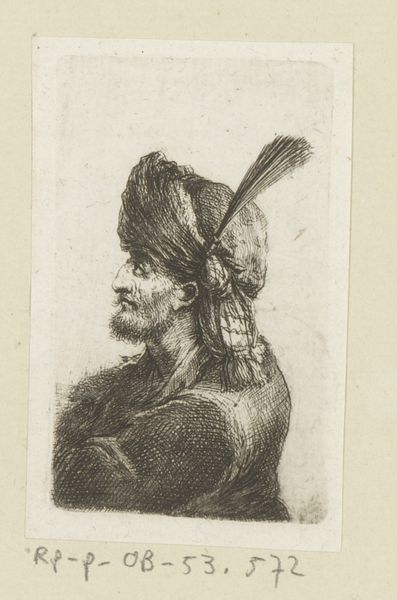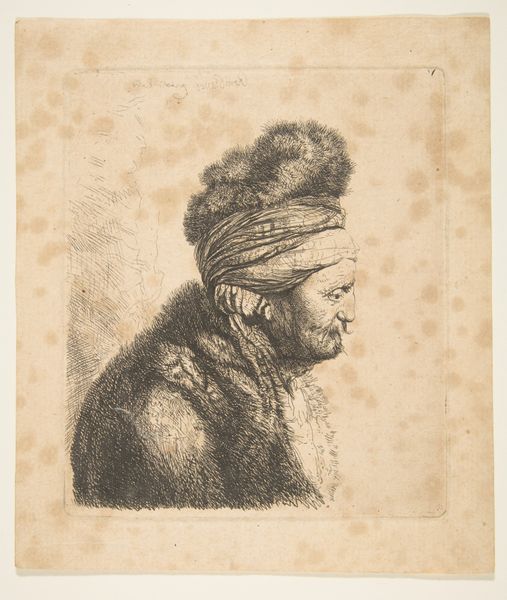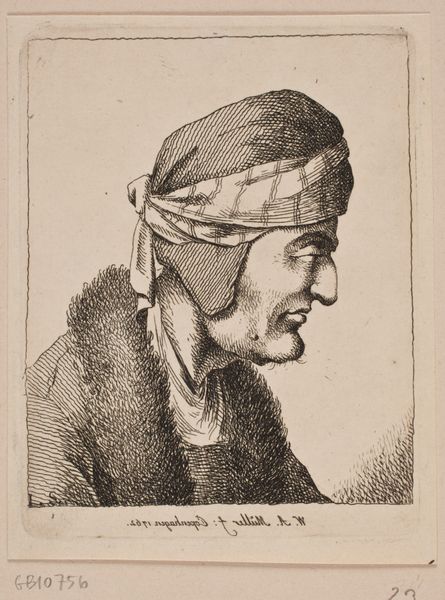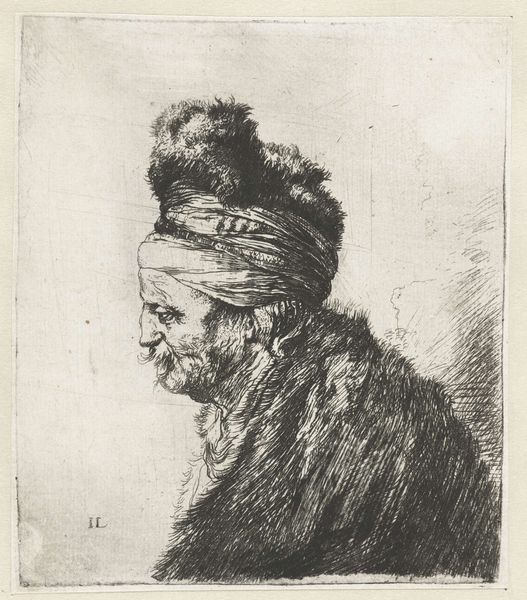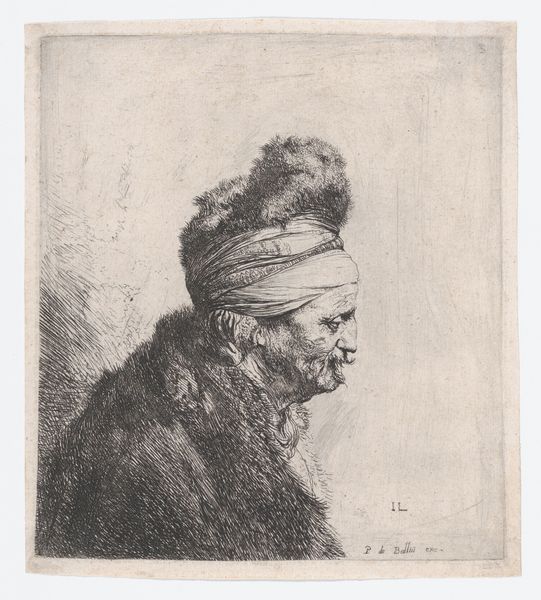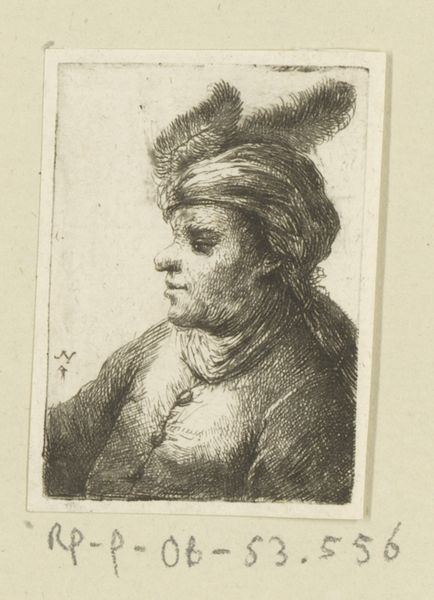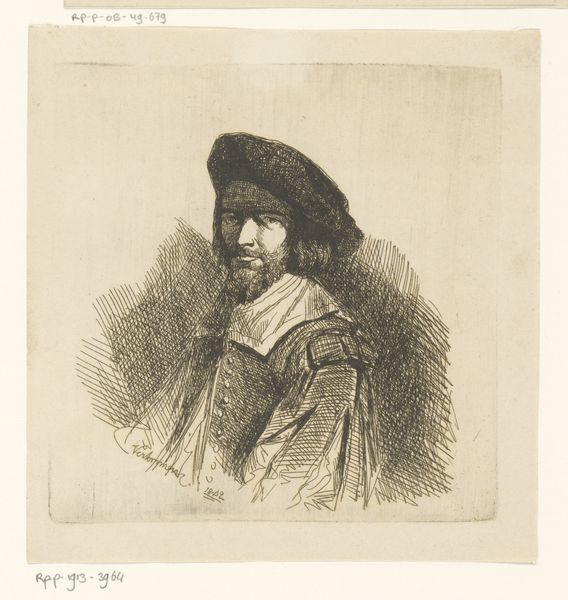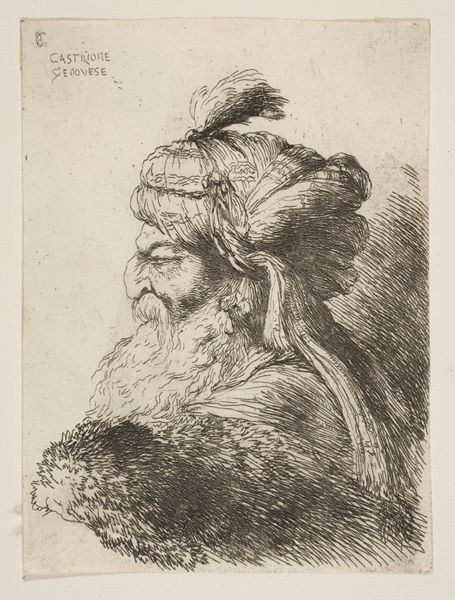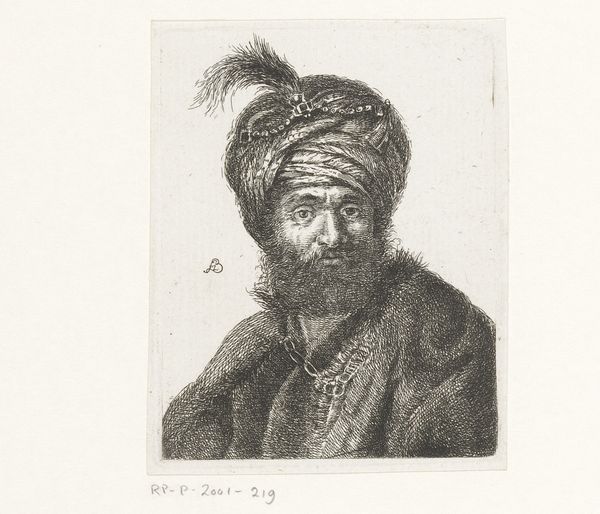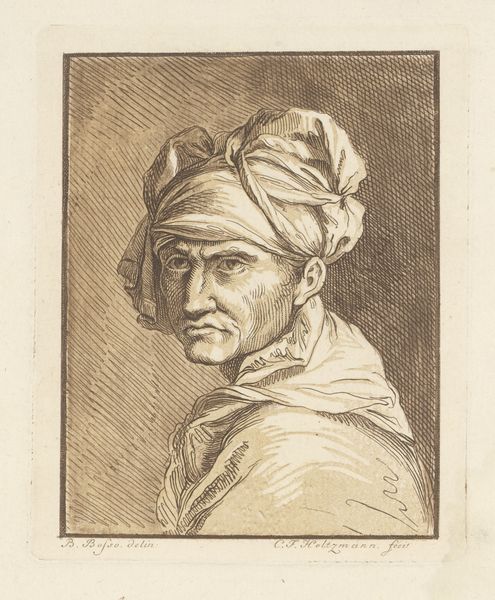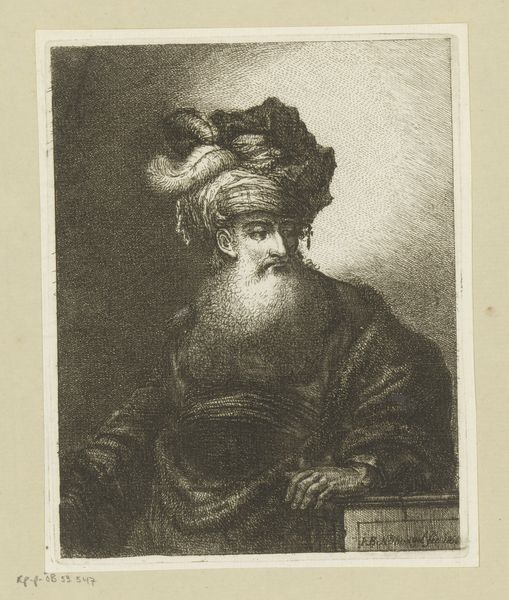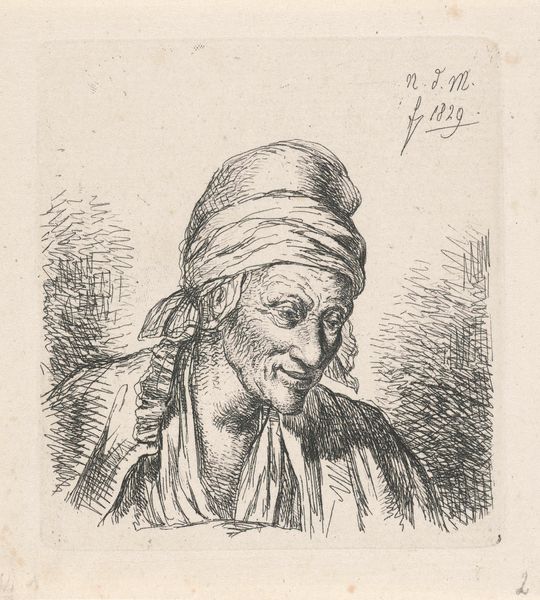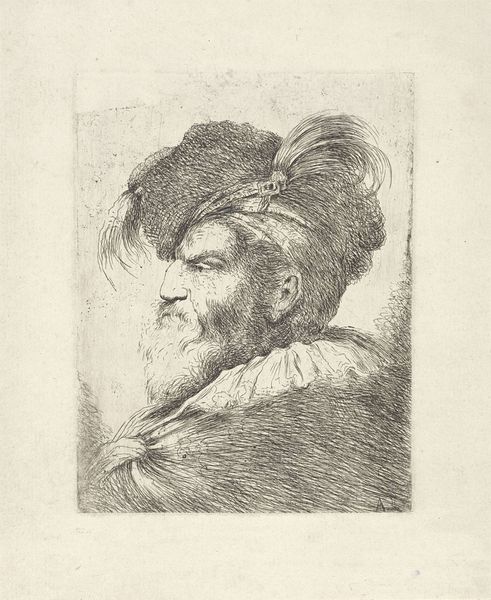
Dimensions: height 88 mm, width 77 mm
Copyright: Rijks Museum: Open Domain
Curator: Here we have "Man met muts met veren en pluim en profile," an engraving from 1776. The work is attributed to Johann Andreas Benjamin Nothnagel. Editor: My first thought? This print has real presence. The detailed etching creates such texture—the fur, the feathers... it's almost palpable, like a relic of baroque theatre. Curator: Baroque influence is certainly palpable, yes, especially if we consider Nothnagel's use of the engraving medium, allowing for meticulous reproduction, which democratized images during an era defined by courtly extravagance and theatrical display, echoing themes of identity and status through material representations. Editor: It makes me consider portraiture, and representation. Who was this man? What social strata did he belong to, presented in a medium format of portraiture used by those in power or the emerging bourgeoisie classes? And what does it mean to be remembered via a mass-produced image, an engraving? Was his culture appropriated here? Curator: Good questions. The material reality of an engraving enables such reproduction. And its accessibility certainly alters its function and challenges existing power dynamics of access and display. It allows us to really examine who the image circulated amongst and why. Editor: Precisely! The subject's clothing is very telling here. It's exoticized, it isn’t typical baroque courtly dress. Are we looking at a noble in costume or something more complicated? Curator: From a purely material standpoint, consider the labour involved in crafting the plate, the tools used, the skill required to render such fine detail... Each pull of the press is a record of physical work and the distribution method available at that time, highlighting both production methods, commodification of art, and an era marked by early industrial growth and developing global markets. Editor: That production created social narratives, deliberately or otherwise. His turban, that feather plume… It reads to me as both performative and indicative of 18th-century Orientalism—how the West constructed its ideas about the "Other" through imagery. Curator: Yes, viewing artwork through that lens opens discourse on power. Thanks for these insights. Editor: Thank you for the look into the print-making and dissemination techniques in place at the time, all informing my view of these images.
Comments
No comments
Be the first to comment and join the conversation on the ultimate creative platform.
